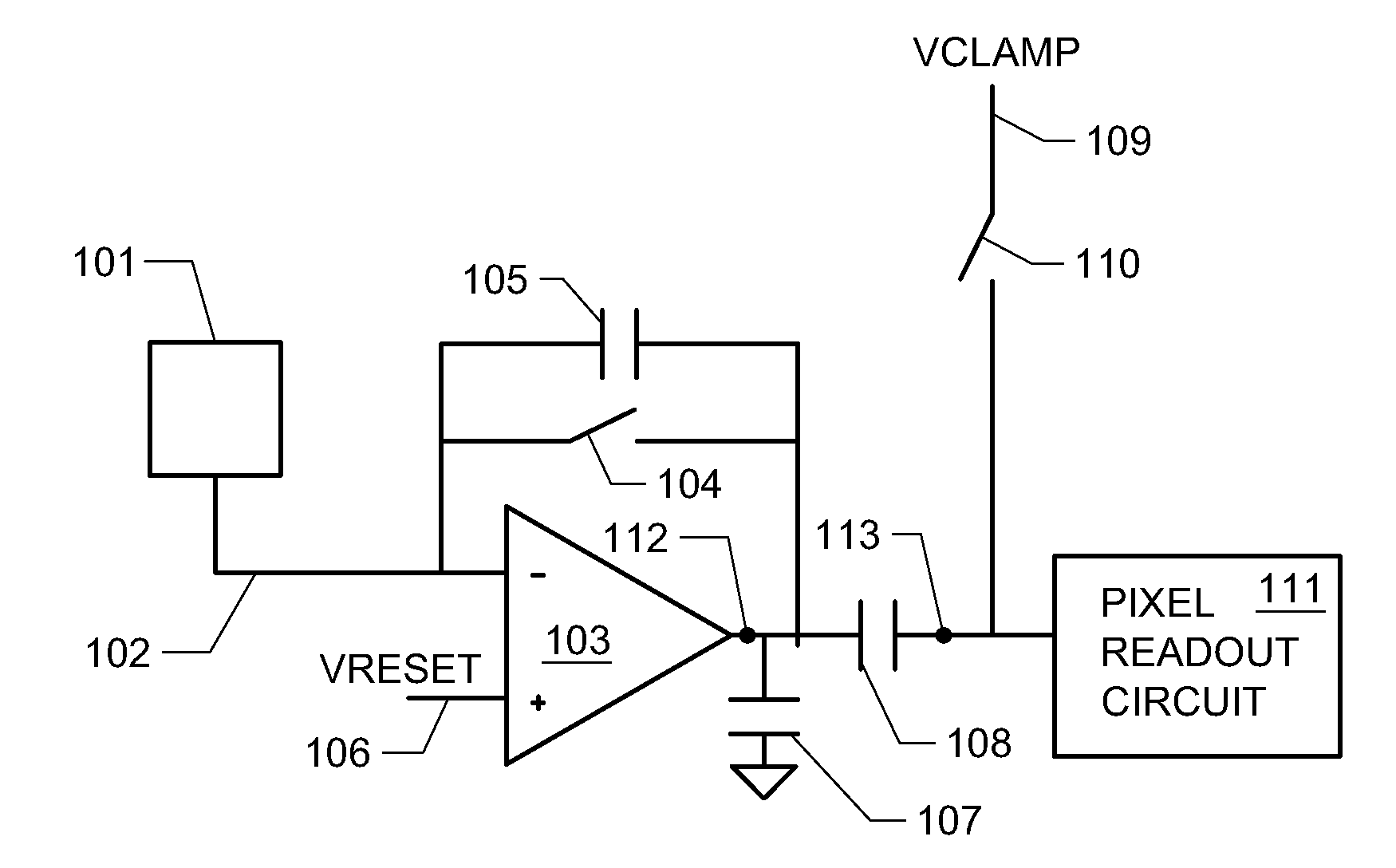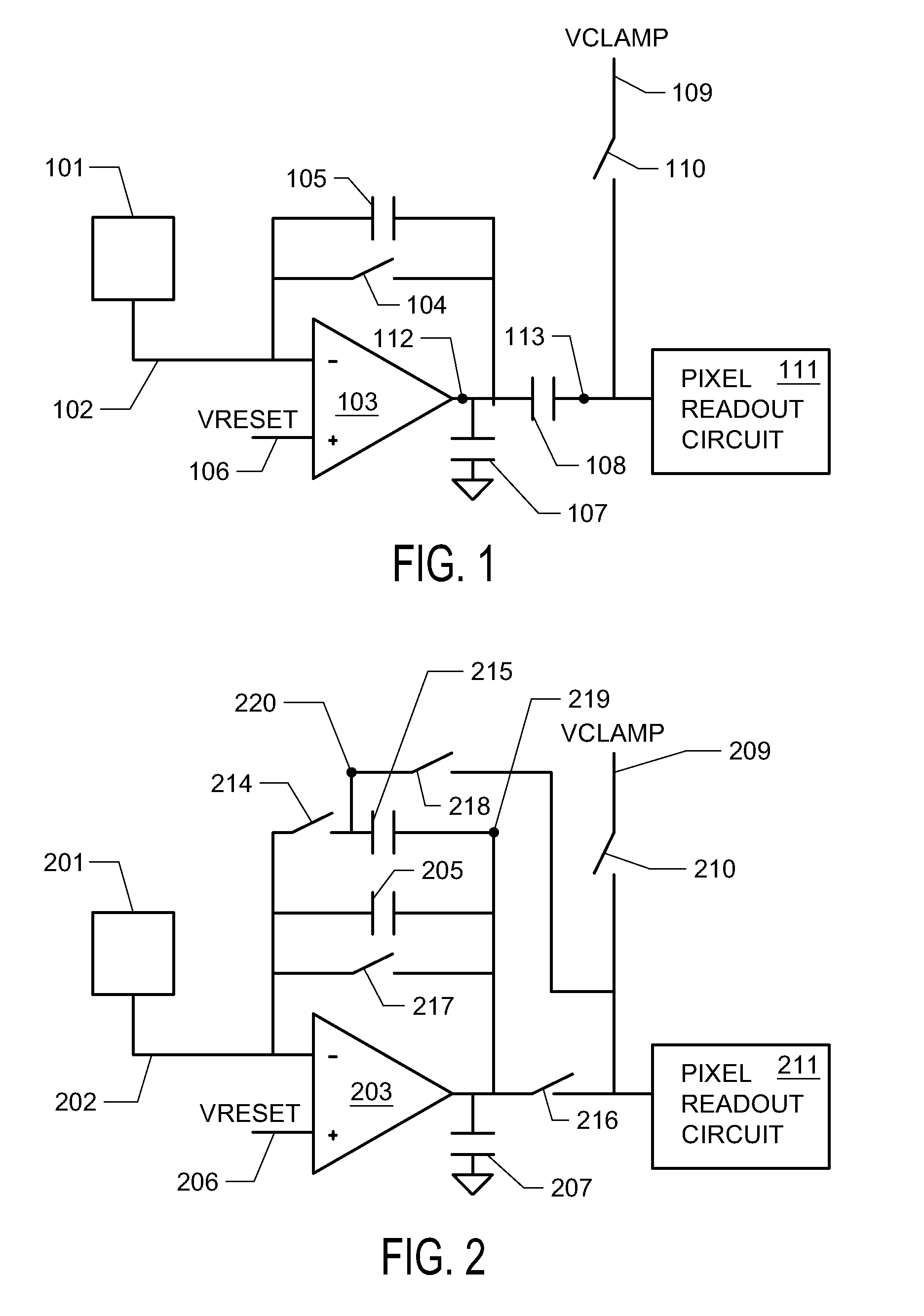Pixel with Switchable High Gain and High Capacity Modes
a high-capacity, switchable technology, applied in the field of high-capacity pixels with switchable high-capacity modes, can solve the problems of reducing the dynamic range of the pixel, doubling the readout bandwidth requirements, and affecting the overall system power, and achieves high signal-to-noise ratio, high gain, and inherent noise signals.
- Summary
- Abstract
- Description
- Claims
- Application Information
AI Technical Summary
Benefits of technology
Problems solved by technology
Method used
Image
Examples
Embodiment Construction
[0013]The invention encompasses the use a dual-use capacitor that can be deployed in one of two functions. In one mode, the dual-use capacitor is utilized to store the pixel reset signal and allows the implementation of in-pixel CDS. In this mode, the amplifier feedback factor is low and amplifier gain is high. Thus, in this mode of operation the pixel is optimized for high sensitivity imaging, with high signal to noise ratio and CDS functionality enabled to further reduce the impact of noise on the signal measurement.
[0014]In the alternative mode, the dual-use capacitor is deployed to increase the capacitance of the CTIA feedback loop, resulting in lower amplifier gain, meaning that a larger range of input signal can fit within the pixel's capacity to accumulate charge. In this mode, the pixel is optimized for higher dynamic range.
[0015]The invention provides an efficient use of limited space to extend the capabilities of the pixel. As the demand for higher resolution arrays and sm...
PUM
 Login to View More
Login to View More Abstract
Description
Claims
Application Information
 Login to View More
Login to View More - R&D
- Intellectual Property
- Life Sciences
- Materials
- Tech Scout
- Unparalleled Data Quality
- Higher Quality Content
- 60% Fewer Hallucinations
Browse by: Latest US Patents, China's latest patents, Technical Efficacy Thesaurus, Application Domain, Technology Topic, Popular Technical Reports.
© 2025 PatSnap. All rights reserved.Legal|Privacy policy|Modern Slavery Act Transparency Statement|Sitemap|About US| Contact US: help@patsnap.com


